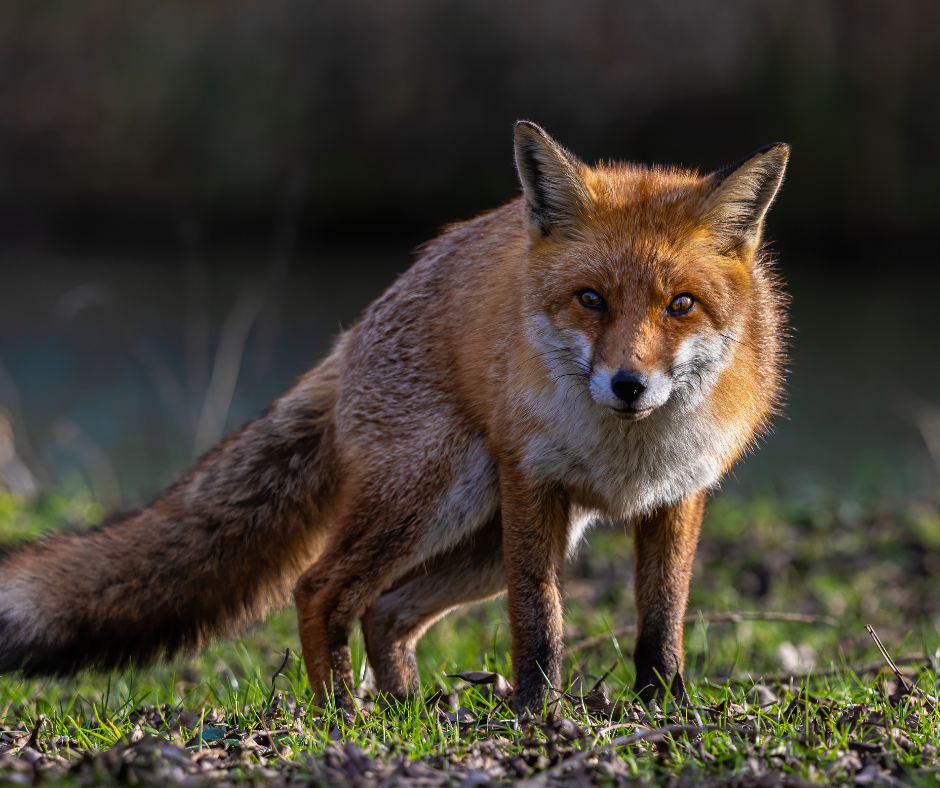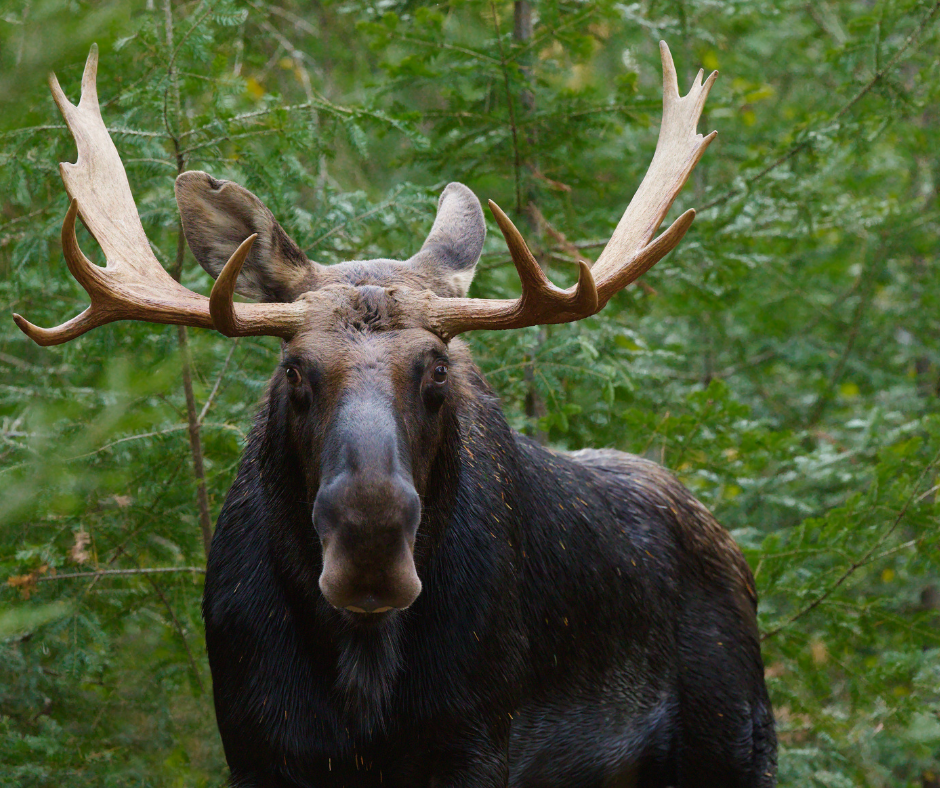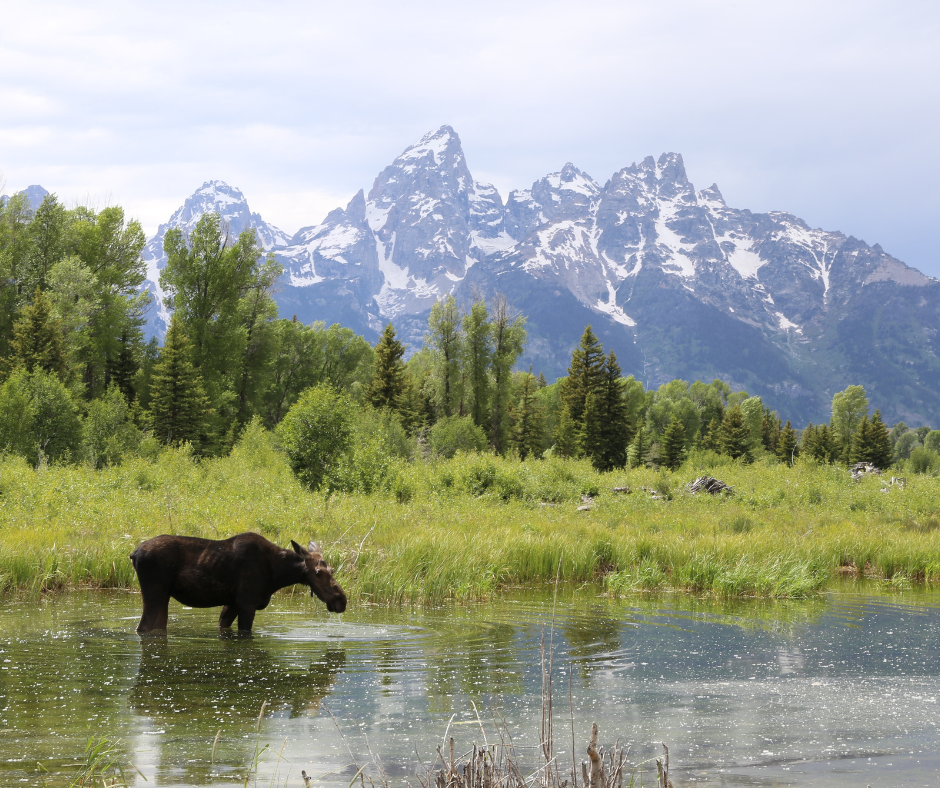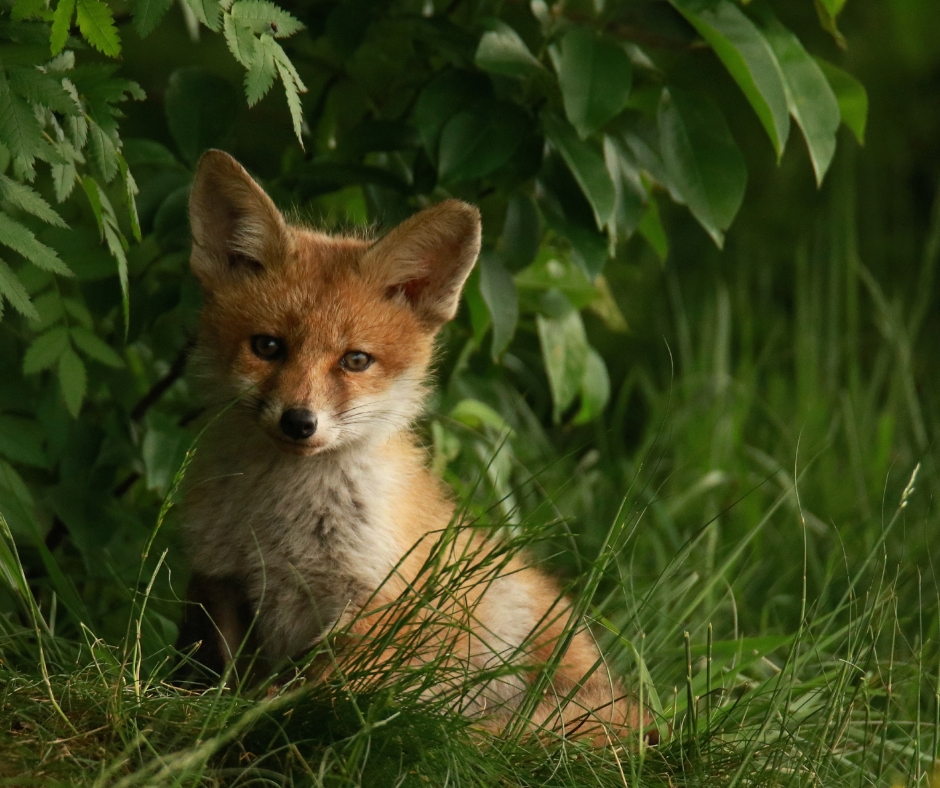Spotting Moose and Fox
When people think of wildlife in the Greater Yellowstone Ecosystem, they often picture bears and wolves. These apex predators attract thousands of visitors each year hoping for a glimpse. But just as majestic—and often easier to spot—are the moose and red fox. They may not inspire the same awe, but their presence is just as compelling. From the quiet power of a moose in the willows to a red fox darting through sagebrush, these animals offer unforgettable moments for those who take the time to look.
Moose and foxes play very different roles in the ecosystem, yet both are essential. By learning to identify them, observers contribute to their own understanding, as well as to conservation. Through Nature Mapping Jackson Hole, citizen scientists help track where animals are, how they move, and how they respond to a changing environment.
The Role of Moose and Red Foxes in Ecosystem Balance
Moose and red foxes are vital components of the Greater Yellowstone Ecosystem, each playing a unique role in maintaining ecological balance. Moose, as large herbivores, influence vegetation patterns and provide a food source for predators. Red foxes, with their diverse diet, help control small mammal populations and contribute to seed dispersal. Both species are indicators of environmental health and are central to our conservation efforts. By understanding their behaviors and habitats, we can better protect these extraordinary animals and the ecosystem they inhabit.
Wildlife Observation Highlights
Moose: The Patchwork Animal
Moose (Alces alces) are the largest members of the deer family, standing 5 to 6.5 feet tall at the shoulder. With long, stilt-like legs, a short body, and an oversized nose, they’ve earned the nickname “the patchwork animal”—as if nature stitched them together purely for survival.
Long Legs and Big Noses
Long legs allow moose to navigate deep snow and marshes, while wide, splayed hooves prevent them from sinking into soft terrain. Their large noses help warm frigid air before it reaches their lungs and aid in detecting vegetation beneath snow.
Winter and Summer Wardrobe Changes
In winter, moose grow a thick, dark brown coat for insulation. Bulls (males) shed their antlers to conserve energy, then begin regrowth in early spring with velvet-covered nubs that rapidly develop through summer. Warmer temperatures also trigger molting, and moose lose their winter coats in uneven tufts, revealing a lighter, sleeker summer coat better suited to heat and insect defense.
Gender Reveal
Cows (females) don’t grow antlers but can be identified by a distinct white vulva patch on their hindquarters—a feature also present in female calves. Noting these traits helps Nature Mappers accurately record sex and age class during observations.
Population on Decline
Moose are largely solitary but may group up in winter when food is scarce or during the fall rut. While populations are stable in much of the region, the Jackson Hole herd has declined due to vehicle collisions, disease, and climate change. Each reported sighting through Nature Mapping helps biologists better understand moose movements and habitat use, supporting conservation efforts.
Red Fox: Adaptable and Alert
The red fox (Vulpes vulpes) is a small, nimble predator built for stealth and speed. Common across the Greater Yellowstone Ecosystem, foxes are often glimpsed darting across meadows or hunting near the edges of forests. Despite their small size, they’re highly adaptable and thrive in a variety of habitats.
All Ears
With elongated bodies, pointed ears, and sharp snouts, red foxes are skilled hunters of small mammals like voles and mice. They rely on sound to detect prey under the snow, then crouch low and leap—nose-first—into their target. This signature “mousing” behavior is one of the best ways to identify them in the wild.
Changing the Winter Coat
In winter, red foxes sport dense, full coats that insulate against the cold and give them their classic red-orange appearance with black legs and a white-tipped tail, though some may appear in silver or cross-phase variations. Their long, bushy tails serve multiple purposes—providing balance, warmth, and communication. As spring arrives, they shed their thick coats, revealing a thinner, sleeker summer layer. While they may look scruffy during this transition, their agility remains unchanged, and their diet expands to include insects, berries, and young birds.
Male or Female? It's Hard to Tell
Adult male red foxes are usually slightly larger than females, with broader heads and heavier builds. Females appear more slender and are often seen near dens in spring while caring for kits. During breeding season, males may follow or stay close to females. Physical differences are subtle and hard to spot without close comparison.
Why Nature Mapping is Important
Behavioral Insights
Observing the behaviors of moose and red foxes provides insights into their survival strategies. Moose are often seen browsing on willows, while foxes are known for their opportunistic scavenging.
Conservation Significance
Monitoring these species helps us understand wildlife corridors and population shifts, crucial for effective conservation planning and reducing human-wildlife conflicts.
Nature Map
Your participation in wildlife observation contributes to a growing database that supports research and conservation efforts, ensuring the protection of these species for future generations.
Join Our Conservation Efforts
Recognizing and reporting wildlife sightings is a simple but powerful way to support conservation. Moose and red fox are excellent species for Nature Mappers to focus on—they’re relatively common, visible year-round, and offer great opportunities for observing seasonal changes in appearance and behavior.
Each data point helps biologists piece together a bigger picture: where wildlife corridors exist, how populations are shifting, and where human-wildlife conflicts might be emerging. Whether it’s a moose trudging through deep snow or a fox sunning itself in early spring, your observations matter.
And while everyone hopes to see a bear or a wolf, some of the most meaningful—and magical—wildlife encounters come from animals we tend to overlook. The moose and the fox are no less iconic, and their stories are just as vital to the health of our ecosystem.





